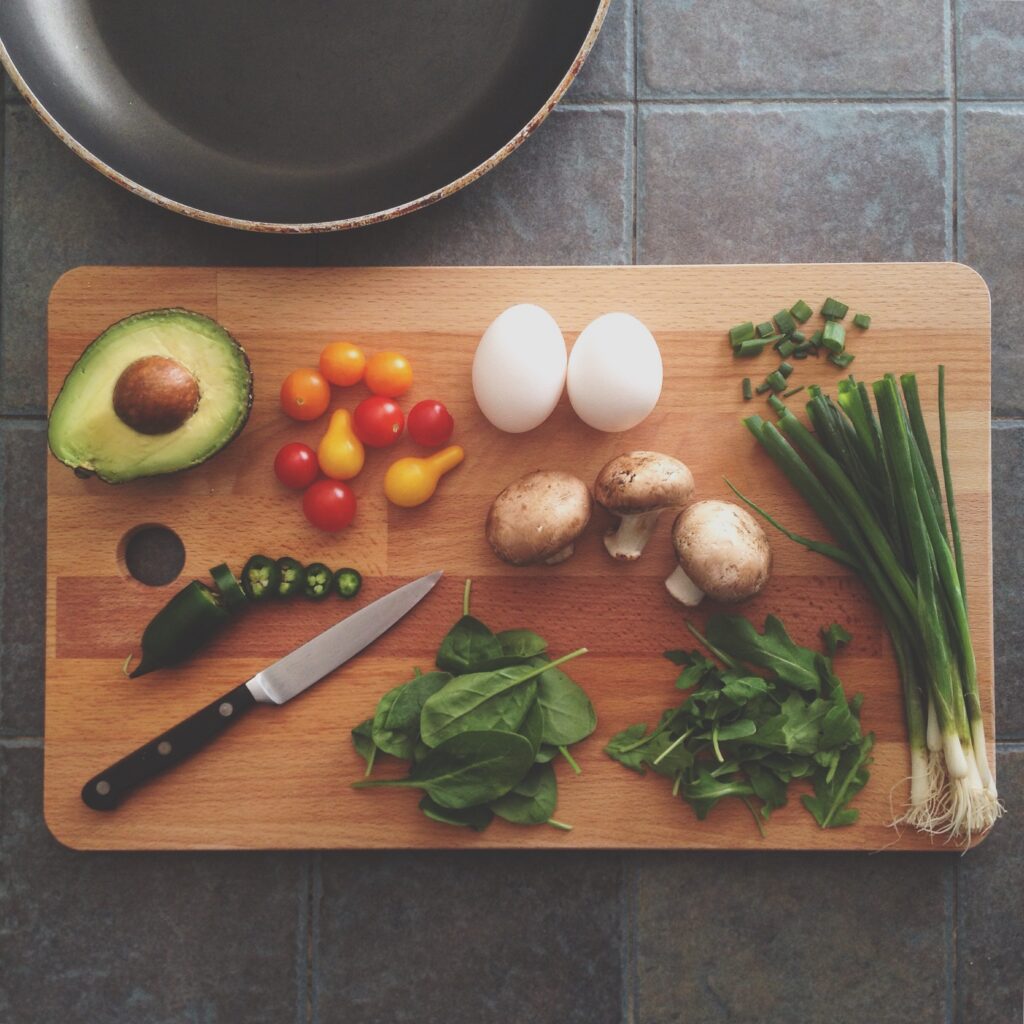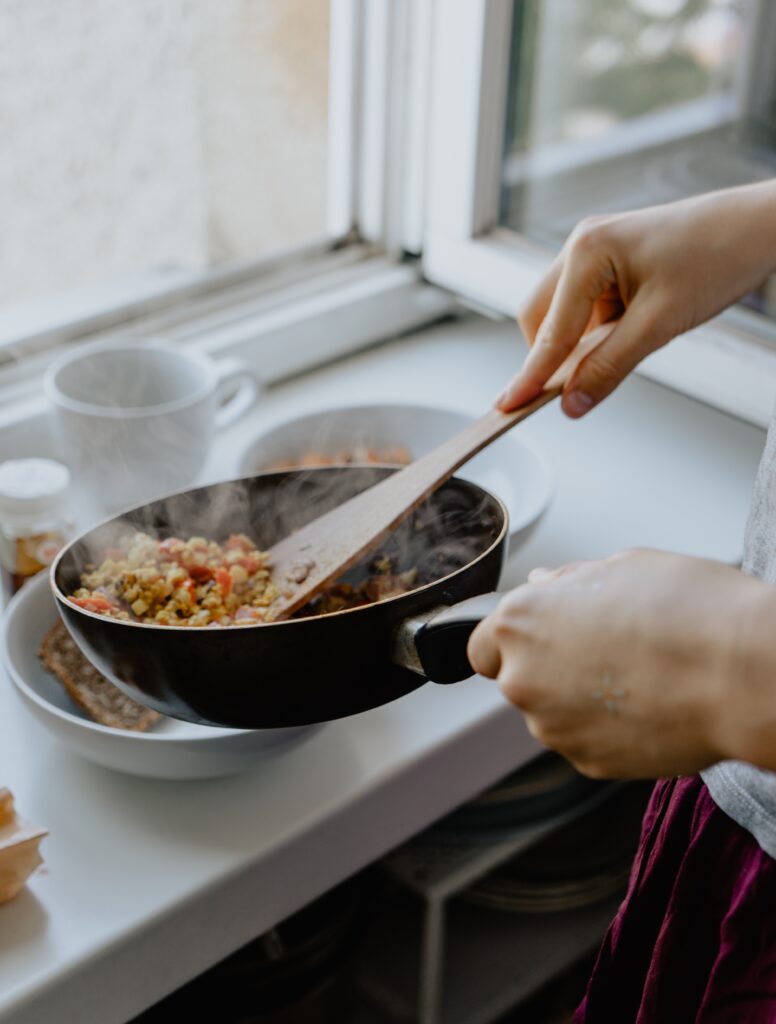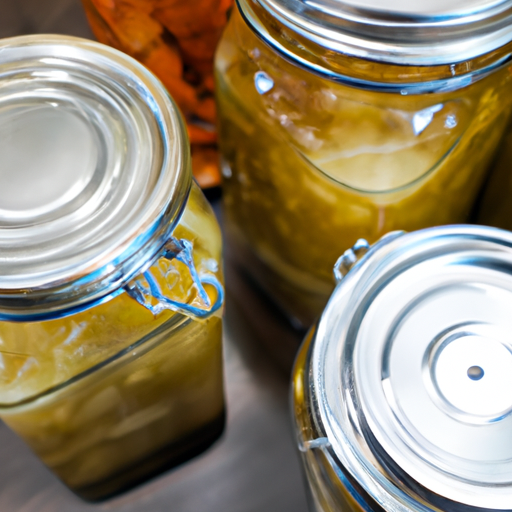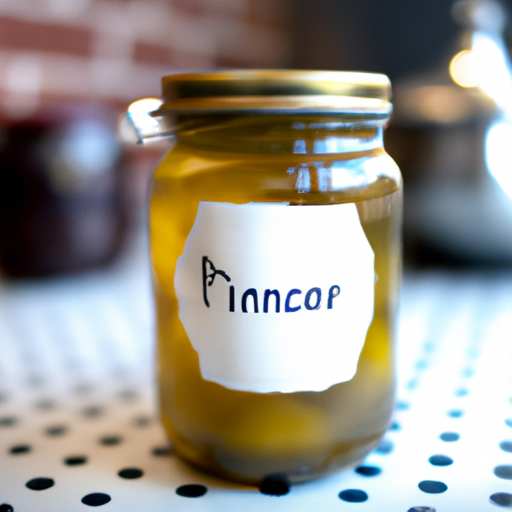Are you a home cook looking to try pressure canning but unsure if it’s safe to use a pressure canner on your glass or ceramic stovetop? Well, we’ve got you covered! In this article, we’ll provide you with all the essential information you need to know about using a pressure canner on a glass or ceramic stovetop. No more doubting or worrying, let us help you make your canning adventures a success!

Safety Considerations
Understanding the Heat Transfer
When considering whether or not to use a pressure canner on a glass or ceramic stovetop, it is important to understand the concept of heat transfer. Glass and ceramic stovetops are known for their slower heat transfer compared to other types of cooktops such as electric coil or induction. This slower heat transfer can be a concern when using a pressure canner, as it may take longer for the canner to reach and maintain the necessary pressure for safe canning.
Can Glass or Ceramic Handle High Temperatures?
Glass and ceramic are known for their durability and resistance to high temperatures. However, it is important to note that not all glass or ceramic stovetops are created equal. Some models may have specific temperature limitations and could potentially be damaged or cracked under high heat conditions. It is important to consult the user manual or contact the manufacturer to verify the maximum temperature limits of your specific stovetop.
Potential Risks and Hazards
Using a pressure canner on a glass or ceramic stovetop can pose certain risks and hazards. One of the main concerns is the weight and size of the pressure canner, as it can place significant stress on the stovetop surface. This increased weight can potentially lead to cracks or other damages. Additionally, the potential for uneven heating due to the slower heat transfer of glass or ceramic stovetops may affect the pressure canner’s ability to reach and maintain the required pressure for safe canning.
Impact on Stovetop
Weight and Size of Pressure Canner
It is important to consider the weight and size of the pressure canner when using it on a glass or ceramic stovetop. Pressure canners can be heavy, especially when filled with jars and food. This added weight can exceed the weight limits recommended by the stovetop manufacturer, potentially leading to damages or even accidents. Always check the weight limits specified in your stovetop’s user manual and ensure that the pressure canner, including its contents, falls within those limits.
Compatibility with Glass or Ceramic
Not all pressure canners are compatible with glass or ceramic stovetops. Some manufacturers explicitly state that their canners are not to be used on these types of stovetops due to the potential risks of damage or accidents. Before attempting to use a pressure canner on a glass or ceramic stovetop, carefully read the manufacturer’s instructions and consult the user manual for any specific warnings or limitations.
Sealing and Stability
The sealing and stability of a pressure canner is crucial when using it on a glass or ceramic stovetop. The canner must form a tight seal with the stovetop surface to ensure proper heat distribution and prevent any potential leaks. Additionally, the stability of the canner is important to prevent it from sliding or tipping over during the canning process. Always follow the manufacturer’s instructions for properly sealing and stabilizing the pressure canner on your specific stovetop surface.
Manufacturer Recommendations
Checking the User Manual
The user manual provided by the stovetop manufacturer is a valuable resource when determining whether it is safe to use a pressure canner on a glass or ceramic stovetop. The manual will often include specific instructions or warnings regarding the use of heavy or high-heat cookware on the stovetop surface. Take the time to thoroughly read the user manual and look for any information pertaining to pressure canning.
Consulting Customer Support
If the user manual does not provide clear guidelines or if you still have concerns, it is recommended to contact the manufacturer’s customer support. They can provide you with accurate and up-to-date information regarding the compatibility and safety of using a pressure canner on your particular glass or ceramic stovetop. Customer support representatives are trained to assist customers with any questions or concerns and can provide valuable insights before making a decision.
Alternatives for Glass or Ceramic Stovetops
Electric Coil or Electric Smoothtop Stoves
If using a pressure canner on a glass or ceramic stovetop is not recommended or possible, there are alternative types of stovetops that can be used. Electric coil or electric smoothtop stoves are known for their ability to withstand higher heat and heavier cookware. These types of stovetops may be a more suitable option for pressure canning, as they can provide faster and more even heat transfer.
Induction Cooktops
Another alternative for glass or ceramic stovetops is an induction cooktop. Induction cooktops use magnetic fields to heat the cookware directly, resulting in faster and more efficient heat transfer. They are generally considered safe for pressure canning and offer precise temperature control. However, it is important to ensure that your pressure canner is compatible with induction cooktops, as some canners require a magnetic or ferrous material for induction heating to work effectively.

Protective Measures
Using a Canner Trivet or Heat Diffuser
To minimize the risks associated with using a pressure canner on a glass or ceramic stovetop, consider using a canner trivet or heat diffuser. A canner trivet is a raised platform that helps distribute the weight of the canner more evenly, reducing the stress on the stovetop surface. A heat diffuser is a metal plate that helps distribute the heat more evenly, preventing hot spots that can potentially damage the stovetop. These protective measures can provide an extra layer of safety and help mitigate potential risks.
Adding a Heat-Resistant Barrier
To further protect your glass or ceramic stovetop, you can add a heat-resistant barrier between the stovetop surface and the pressure canner. Options include using a heat-resistant pad or a thick layer of aluminum foil. These barriers can help reduce the direct contact between the canner and the stovetop, minimizing the risk of damage or cracks.
Using Reinforced Cookware
Choosing the right cookware is essential when pressure canning on a glass or ceramic stovetop. Opt for reinforced cookware, such as heavy-duty stainless steel or cast iron, that can better withstand the weight and high temperatures associated with pressure canning. These materials are known for their durability and heat resistance, reducing the likelihood of damage to the stovetop surface.
Expert Opinions
Professional Cooks and Chefs
Seeking the advice of professional cooks and chefs can provide valuable insights into the safety and feasibility of using a pressure canner on a glass or ceramic stovetop. These individuals often have extensive experience with various cooking methods and equipment, including pressure canning. Their expertise can help you make informed decisions and understand any potential risks involved.
Pressure Canner Manufacturers
Consulting pressure canner manufacturers can offer specialized knowledge and guidelines regarding the use of their products on glass or ceramic stovetops. They have the firsthand experience and technical expertise to provide accurate information on the compatibility and safety considerations when pressure canning on different types of stovetops. Contacting the manufacturer directly ensures that you are receiving the most up-to-date and reliable information.
Stovetop Manufacturers
Stovetop manufacturers are the best source of information when it comes to understanding the limitations and requirements of their products. They can provide useful insights into the maximum weight limits, temperature thresholds, and other considerations specific to using a pressure canner on a glass or ceramic stovetop. Reaching out to the stovetop manufacturer directly can help you determine whether your specific model is safe for pressure canning.

Testing and Experimentation
Conducting Temperature Tests
If you are considering using a pressure canner on a glass or ceramic stovetop, conducting temperature tests can provide valuable data on the stovetop’s performance. Use a reliable thermometer to accurately measure the temperature at different locations on the stovetop surface during the canning process. This will help you evaluate the efficiency of heat transfer and ensure that the canner is able to reach and maintain the required temperatures for safe canning.
Monitoring for Surface Damage
Regularly monitor the glass or ceramic stovetop surface for any signs of damage or stress. Look for cracks, discoloration, or any irregularities that may indicate excessive heat or weight. If you notice any changes, discontinue using the pressure canner on the stovetop immediately and consult a professional for further assessment or repair.
Evaluating Long-Term Performance
To determine the long-term performance and safety of using a pressure canner on a glass or ceramic stovetop, it is essential to continuously evaluate the impact over time. Monitor the stovetop’s functionality, such as its ability to maintain consistent heat and pressure, as well as any signs of wear or damage. Regular evaluations will help you make informed decisions about the ongoing use of a pressure canner on a glass or ceramic stovetop.
Success Stories
Personal Experiences
Personal experiences shared by individuals who have successfully used a pressure canner on a glass or ceramic stovetop can provide valuable insights. These anecdotes can offer practical tips, recommended techniques, and overall satisfaction with the process. Engaging in discussions with experienced canners can help you understand the potential challenges and benefits of using a pressure canner on these types of stovetops.
Community Forums and Discussions
Community forums and discussions focused on pressure canning can be excellent resources for gathering information and perspectives on using a pressure canner on a glass or ceramic stovetop. Engaging in these discussions allows you to connect with a diverse community of canners who can provide personal experiences, tips, and recommendations that may be applicable to your specific situation. Remember to ask questions, share concerns, and benefit from the collective knowledge of the community.

Case Studies
Specific Glass or Ceramic Stovetop Models
Analyzing case studies that focus on specific glass or ceramic stovetop models can provide valuable information and insights into the safety and performance of using a pressure canner. These case studies often involve controlled experiments and tests conducted by experts or organizations. By reviewing these studies, you can gain a deeper understanding of the potential risks, limitations, and considerations associated with using a pressure canner on your particular stovetop model.
Comparative Analysis
Comparative analysis of different types of stovetops and their compatibility with pressure canners can help you make an informed decision. These analyses typically involve comparing the performance, safety, and overall user satisfaction of different stovetop materials when used with pressure canners. By examining the strengths and weaknesses of each option, you can determine which stovetop material is most suitable for your pressure canning needs.
Conclusion
Using a pressure canner on a glass or ceramic stovetop requires careful consideration of safety, compatibility, and potential risks. While glass and ceramic stovetops can handle high temperatures, their slower heat transfer and weight limitations may pose challenges for pressure canning. It is crucial to consult the user manual, contact the manufacturer for guidance, and consider alternative stovetop options such as electric coil, electric smoothtop, or induction cooktops. Implementing protective measures such as canner trivets, heat-resistant barriers, and using reinforced cookware can help minimize risks. Seeking expert opinions, conducting temperature tests, monitoring for surface damage, and evaluating long-term performance are also important steps to ensure safety. Personal experiences, community forums, case studies, and comparative analysis can provide valuable insights. Ultimately, with careful research, experimentation, and consideration of all factors, you can make an informed decision on whether using a pressure canner on a glass or ceramic stovetop is suitable for your specific circumstances.

